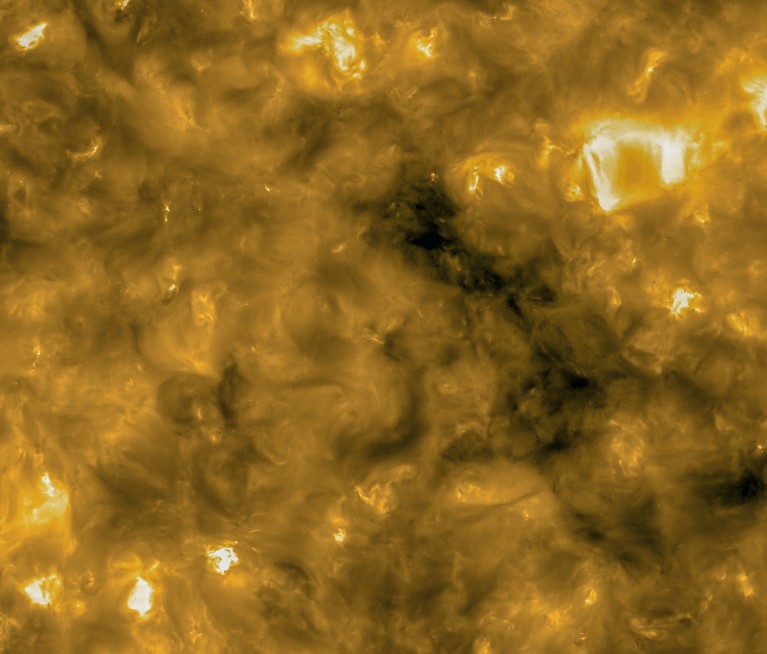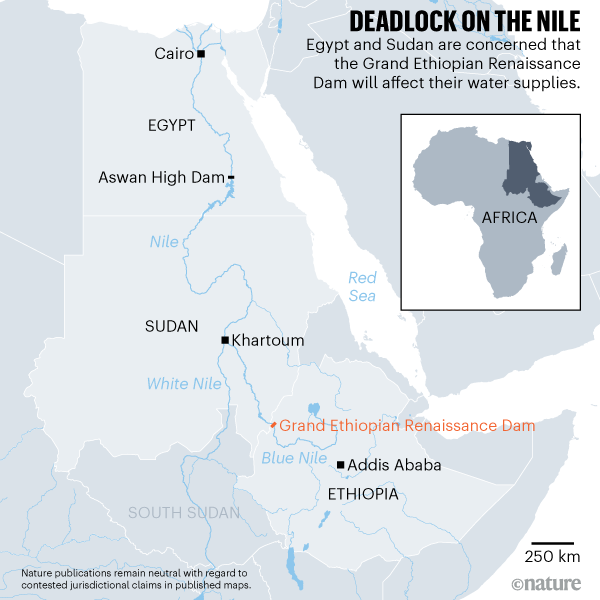Hello Nature readers, would you like to get this Briefing in your inbox free every day? Sign up here

Credit: ESA
Closest photo of the Sun ever taken
The closest image ever taken of the Sun shows the corona teeming with thousands of miniature solar flares. The flares are millions or billions of times smaller than those that can be seen from Earth, and scientists aren’t yet sure how the two phenomena are related. The pictures are the first released from the Solar Orbiter satellite mission, led by the European Space Agency. “When the first images came in, my first thought was this is not possible, it can’t be that good,” says David Berghmans, principal investigator for the orbiter’s Extreme Ultraviolet Imager instrument. “It was much better than we dared to hope for.”
Argument over Africa’s largest dam
Researchers are warning that Egypt, Ethiopia and Sudan need to move faster to resolve a long-running dispute over the building of Africa’s largest hydroelectric dam. Ethiopia is reported to have begun filling the Grand Ethiopian Renaissance Dam, on the Blue Nile river, which it says is an ‘existential necessity’. Ethiopia’s citizens are anticipating electric power, a boost for industry and new jobs. By contrast, Egypt’s government calls the dam an ‘existential threat’. It is concerned that the dam will reduce its water supplies, particularly during times of drought. “One nation’s need for electricity is pinned to another nation’s need for water,” says Mohamed Fouad, a member of the Egyptian parliament.

Cosmic map only deepens expansion mystery
A map of the early Universe has reinforced a long-running conundrum in astronomy over how fast the cosmos is expanding. The data support previous estimates of the Universe’s age, geometry and evolution. But the findings clash with measurements of how fast galaxies are flying apart from each other. They predict that the Universe should be expanding at a significantly slower pace than is currently observed.
Reference: arXiv preprint 1 & arXiv preprint 2
Arctic heat wave is ‘unequivocal’ evidence of climate change
The devastating heat wave between January and June 2020 in the Arctic was made at least 600 times more likely as a result of human-induced climate change. An international team of climate scientists, led by the UK Met Office, analysed the prolonged high average temperatures over 6 months and the record-breaking high of 38 ℃ recorded in Verkhoyansk on 20 June. “We found in both cases that this event would have effectively been impossible without human-induced climate change,” say researchers.
Reference: World Weather Attribution report
